There are pros and cons to exploring Croatia’s coastline in the shoulder season – as in most of Europe, you’ll find lower prices and less crowded landmarks off-peak, but you also run the risk of missing out on the island experience entirely. I decided to take the chance anyway.
This was my second trip to Croatia – I’d been to the country a few years prior, but it hadn’t gone as I’d expected. I’d only made it as far as a dimly lit basement-level hostel in Zagreb, far from the beautiful coast that I’d heard so much about. Rather than sunning myself on a white-stoned beach, I spent a week under grey skies wandering the fruit and veg markets, returning to a secret spot adjacent to the cathedral to pilfer free Wi-Fi, and moping around the Museum of Broken Relationships. After a week of trying to fit a quick jaunt down to the coastline into my schedule, I admitted defeat and retreated back to my original itinerary. Next time I’d do it right, I promised myself.
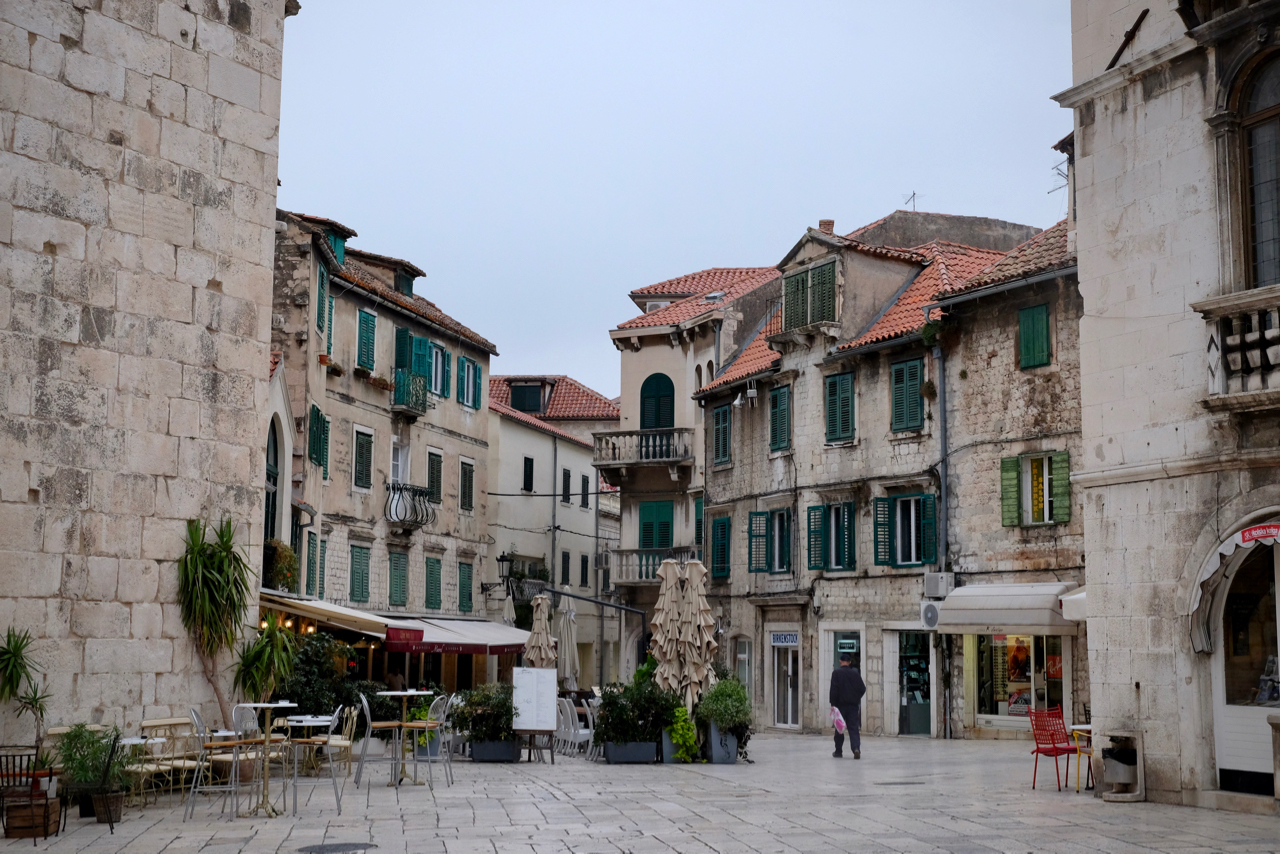
A quiet square in Split, Croatia. Photo by Andrew Thompson.
Fast forward two years and I found myself on the Slovenian coastline a few kilometres north of Croatia. But my cursory research and bad planning revealed a problem. The peak summer season was a thing of the past; I was mid-way into the ominously termed “shoulder season”. Croatia’s idyllic coast was days away from shutting up shop.
“This is the longest shoulder season in years,” a toothless driver told me when I asked him why the bus seat I’d booked online turned out to be a front seat alongside him in a comfortable minivan. “Mainly thanks to the problems in France, Greece and Turkey.”

Many of Croatia’s ferries take a sabbatical over winter, making water crossings difficult. Photo by Andrew Thompson.
Still, as opportunistic as the relatively stable Croatia may be, it’s the weather that ultimately dictates when her tourism lives and dies. The blue skies were giving way to heavy clouds, ocean temperatures were dipping, the tourists numbers were dwindling, and as a result, the typically convenient ferries, sea planes, internal flights and hourly busses were rapidly dropping off the schedule. Even Sail Croatia, the company that ferries thousands of hungover Australians between overpriced Dalmatian Island bars, was making its last rounds.
But with a bit of determination, some luck, and a few unconventional transport choices, I propelled myself down the coastline from north to south, just days before bars, restaurants, hotels and, in some cases, whole islands, prepared to raise their “Closed for the winter” signs.
Rovinj
“Are you hungry?” the German AirBnb host asked, even before I had an opportunity to drop my bag in the lavender-themed room. She didn’t wait for an answer, and presented me with a slice of coconut cake. “It’s traditional to Croatia,” she said.
In the small Old Town Rovinj kitchen, Maja told me how she moved to this idyllic Istrian town several years ago. For the food, sunshine and laid-back way of life, she said, and she’s never looked back. Maja then set about circling the town’s best restaurants and attractions on a large tourist map.

Rovinj is set at water level, with the church bell tower offering the perfect perspective over the old town. Photo by Andrew Thompson.
“You like truffles? Go here, they’ll put it in your pasta. Seafood? Nowhere better than this spot. Have the sardines. It’s good to rent a bicycle, and ride over there,” she said, drawing thin pen lines along the coast. “This is the best beach in town for swimming. This one’s good for no clothes… Oh, and sunset?” she said, almost as an afterthought. “This is the best place to watch the sunset.”
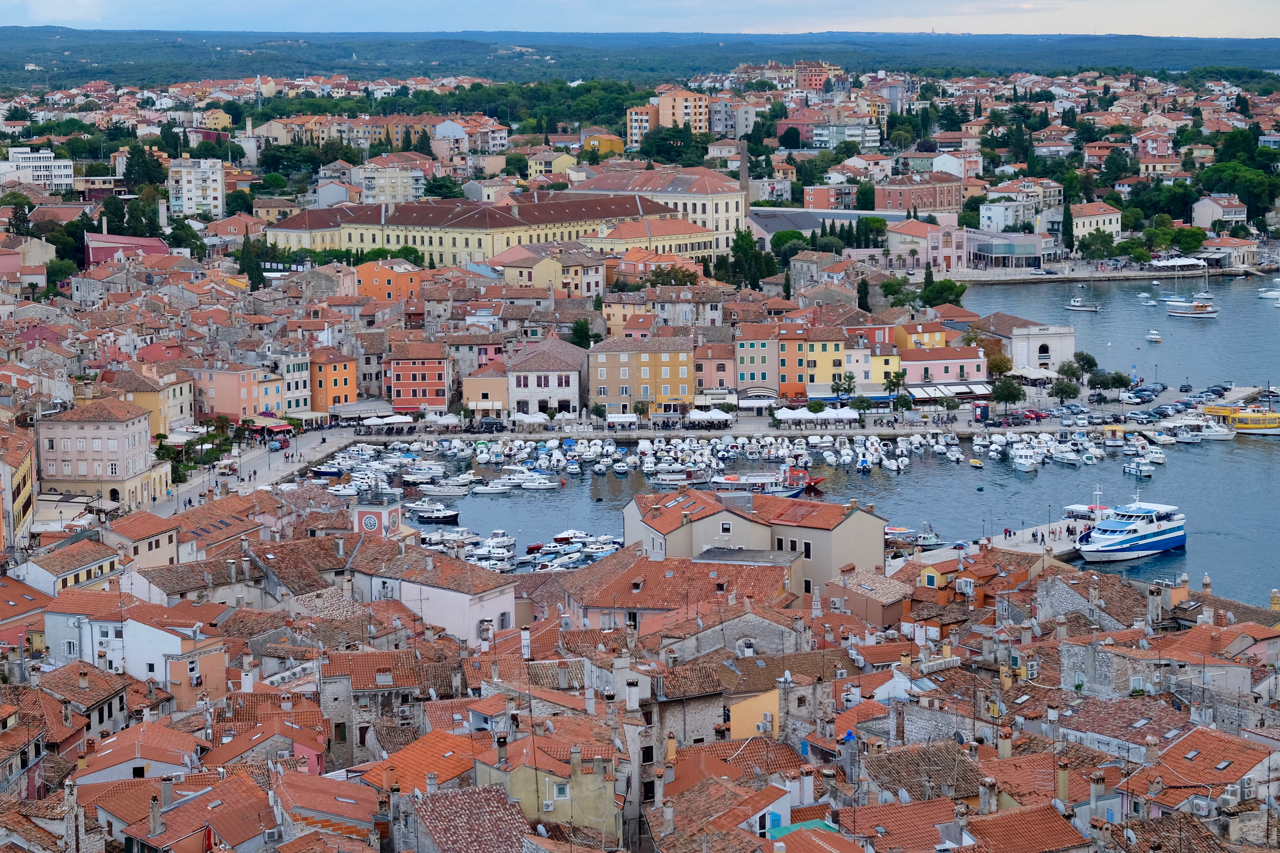
The view of the harbour from the Rovinj bell tower. Photo by Andrew Thompson.
Shortly after she left I wound my way through the narrow cobbled streets towards the water’s edge. I found a church and ascended a narrow staircase to the top of the bell tower, where I stood for close to an hour watching circling boats and marvelling at the tiled rooftops.
When the sun started to dip towards the ocean I made my way back down the steep staircase and followed the map to Maja’s recommended viewing point which, I was pleased to discover, presented me with one of the best sunsets I’ve been lucky enough to witness.
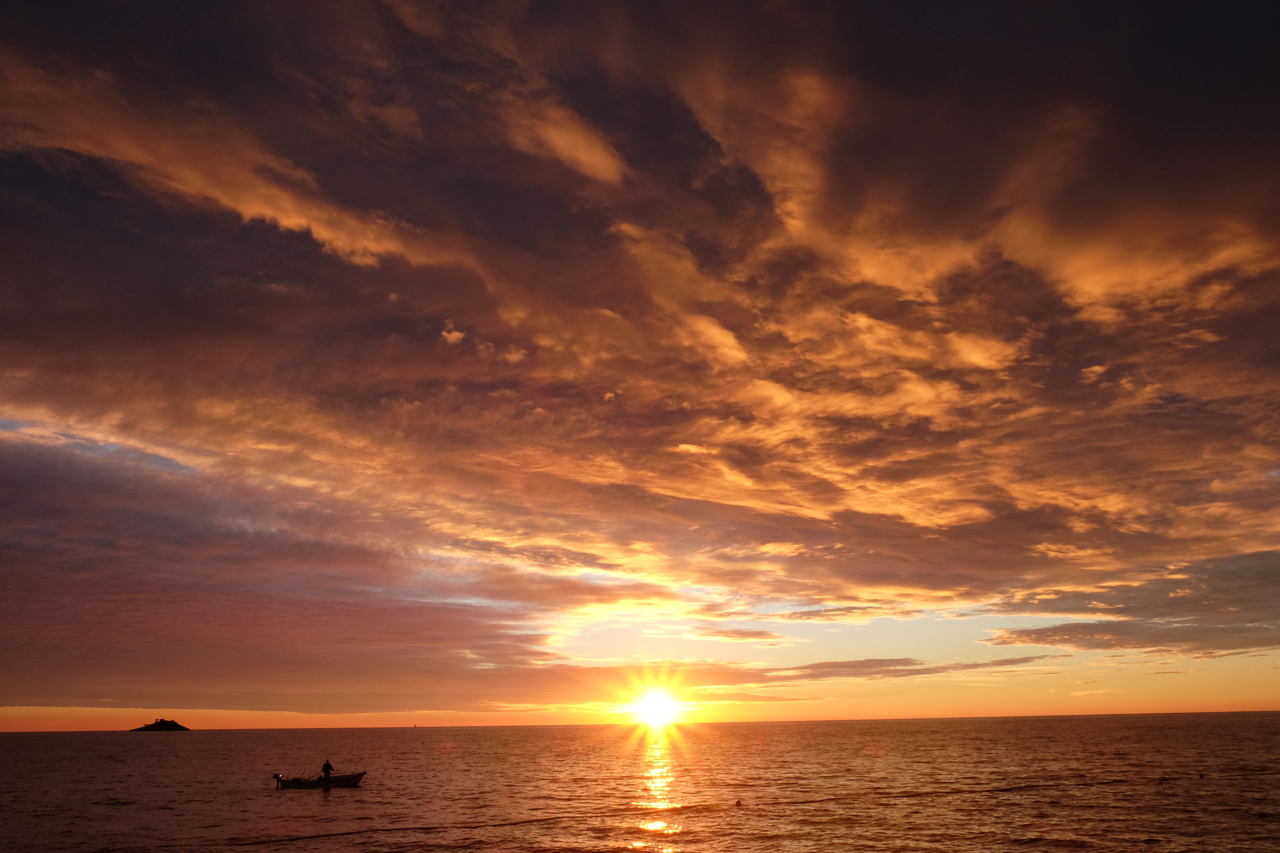
A fisherman pauses to take in the epic sunset in Rovinj. Photo by Andrew Thompson.
Pula
After a few days of eating sardines, cycling along the coastline, and swimming in Rovinj’s crystal clear waters, I realised it was time to move on. I found a bus headed to a town called Pula, where courtesy of the off season I’d booked an entire “stately penthouse” for less than my previous night’s dinner.
Pula was underwhelming. Aside from an ancient arena and some Roman ruins that uniformed school kids were using for illicit smoke breaks, there wasn’t much to it. But I was only really there for its airport, which I headed to early the next morning. I’d found a seat on an tiny charter airline between Pula and Split. It circumvented a few hours’ inland bus ride at a bargain price of just a few Euros.

Despite the windows having a strange blue tint, the view over the Dalmatian Coast was remarkable. Photo by Andrew Thompson.
The Pula airport was alarmingly deserted. Aside from a woman wiping down the counter at the coffee shop there wasn’t another person in the cavernous departures hall. The check-in counters still displayed the previous day’s flights, and so I ordered a cappuccino and took a seat. Eventually a handful of people arrived for their flights, and a woman shuffled over to the check in counter.
“It’s my first time flying,” a Croatian man said to me as we watched staff load our bags into what looked like a toy plane on the runway outside.
“Talk about going all-in on your first flight,” I replied.
He didn’t really understand, and instead cracked a joke about carrying a bomb. I chuckled nervously, hoping it was an ill-considered wisecrack rather than preflight confessional.
The terminal doors eventually opened and we walked out to 15-seater plane. The Dutch pilots pivoted in their seats to welcome us on board, laughed at a private joke, and then flicked a few switches. The air hostess pulled the door closed, mumbled through an in-flight safety briefing, and then we bobbed along the tarmac and whirred up into the air. For the next 30 minutes, as we floated in the skies above the Croatian coastline, my eyes darted between the stunning views outside, the chatty pilots still visible in the front, and the bomb joker sitting a metre away from them.
Hvar
From Split I headed straight to Hvar Island. I found a room in Luka’s Lodge, which promised an engaging owner, good location, and vibrant atmosphere. The overview was correct about the first two features — Luka was kind and hospitable, and the lodge was a 5 minute walk from the harbour. But the time of year had all but put pay to the likelihood of fulfilling the atmosphere criteria.
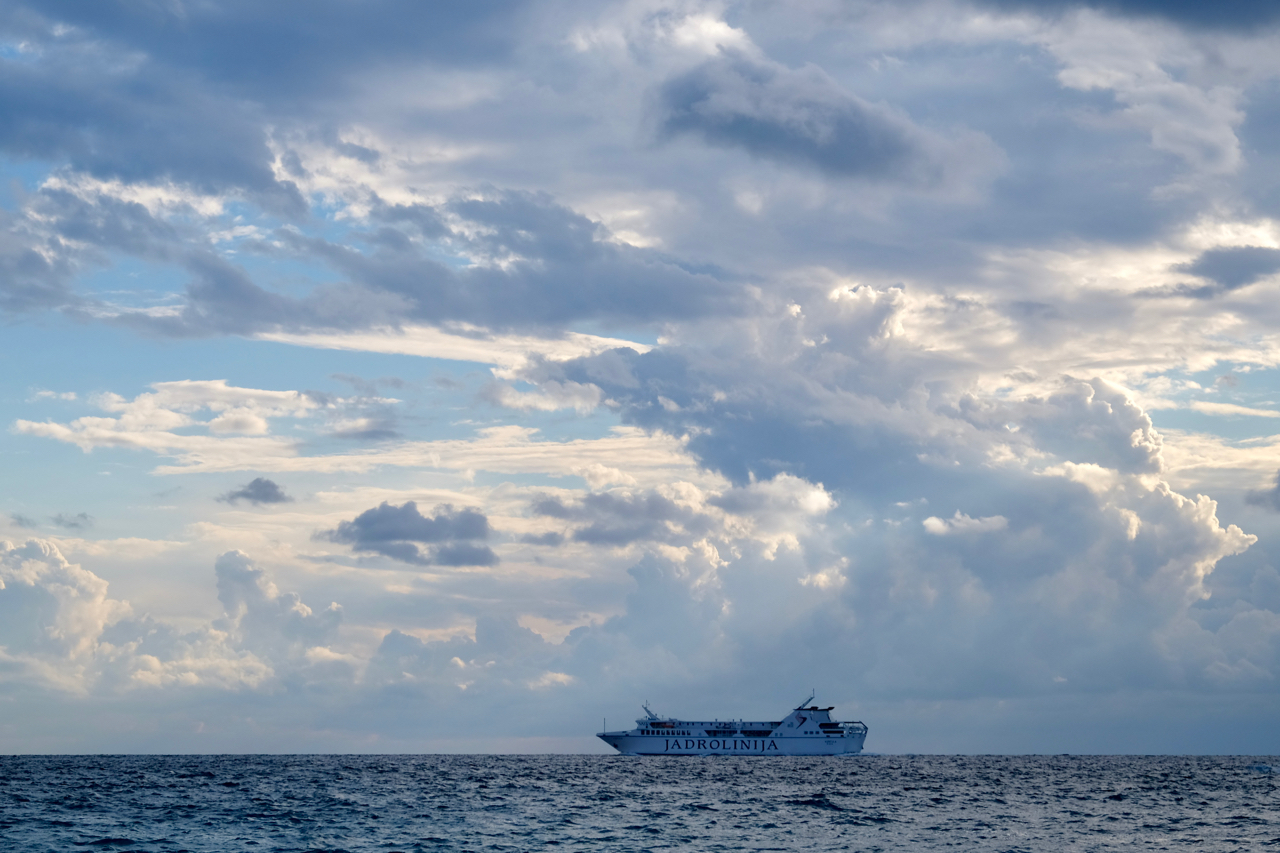
The ferries to Croatia’s islands run less regularly during winter months. Photo by Andrew Thompson.
Hvar is supposed to be one of the country’s primary party islands. Instead, the lodge was pretty much empty, save for a jaded UK-based South African couple in a near permanent state of argument and a handful of other stragglers.
“I’m supposed to be closed,” Luca told me midway into my stay. “But I forgot to limit my availability online, and now I have to honour all your bookings,” he said, seemingly annoyed at having to work an extended season.

Choosing a dumpster for your end of season party is a questionable decision at the best of time, and particularly depressing three weeks after the fact. Photo by Andrew Thompson.
Most bars on the small island had already had their end of season parties. Only one remained open, and on the second night there were just three of us there keeping the staff at work. There appeared to be just a single restaurant on the island still open.

An idyllic resort abandoned for the winter season on the far side of the island. Photo by Andrew Thompson.
Early one morning I took a serene walk across the island’s interior hills and stumbled across a deserted resort on the other side. A ticket book lay open on plastic table at the entrance, moored and abandoned boats bobbed on the clear waters, and the restaurant and dozens of uniform holiday houses were locked. Had it not been for the constant reminders elsewhere on the island that this was the off season, I’d have mistaken the scene for a post-nuclear fallout in paradise.
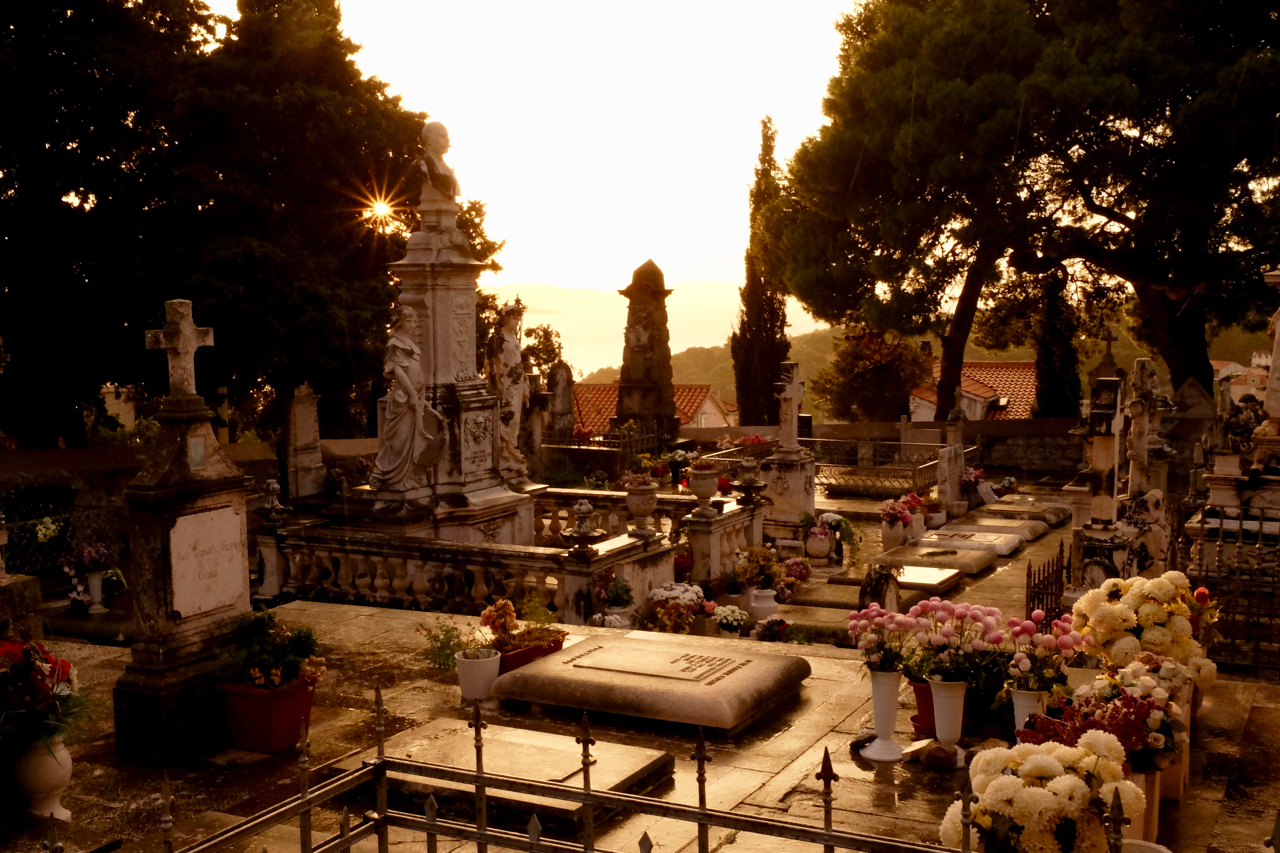
The Hvar graveyard at sunset. Photo by Andrew Thompson.
There’s a strange beauty to a party island devoid of its usual hedonism, and I wouldn’t have chosen to experience Hvar in any other way.
Split
Commentary around Split is often fairly scathing, most of it detailing the degree to which the city set in the ruins of an ancient palace is overly touristy. It would hardly be a surprising revelation. As a result, I returned via ferry to the coastal city sceptical and prepared not to like it, but willing to investigate for myself. But I instantly fell in love with the labyrinthine streets, the tactile nature of the city’s crumbling bricks, the laundry fluttering in the coastal breeze, and the overflowing bougainvillea hiding around the most unlikely corners.
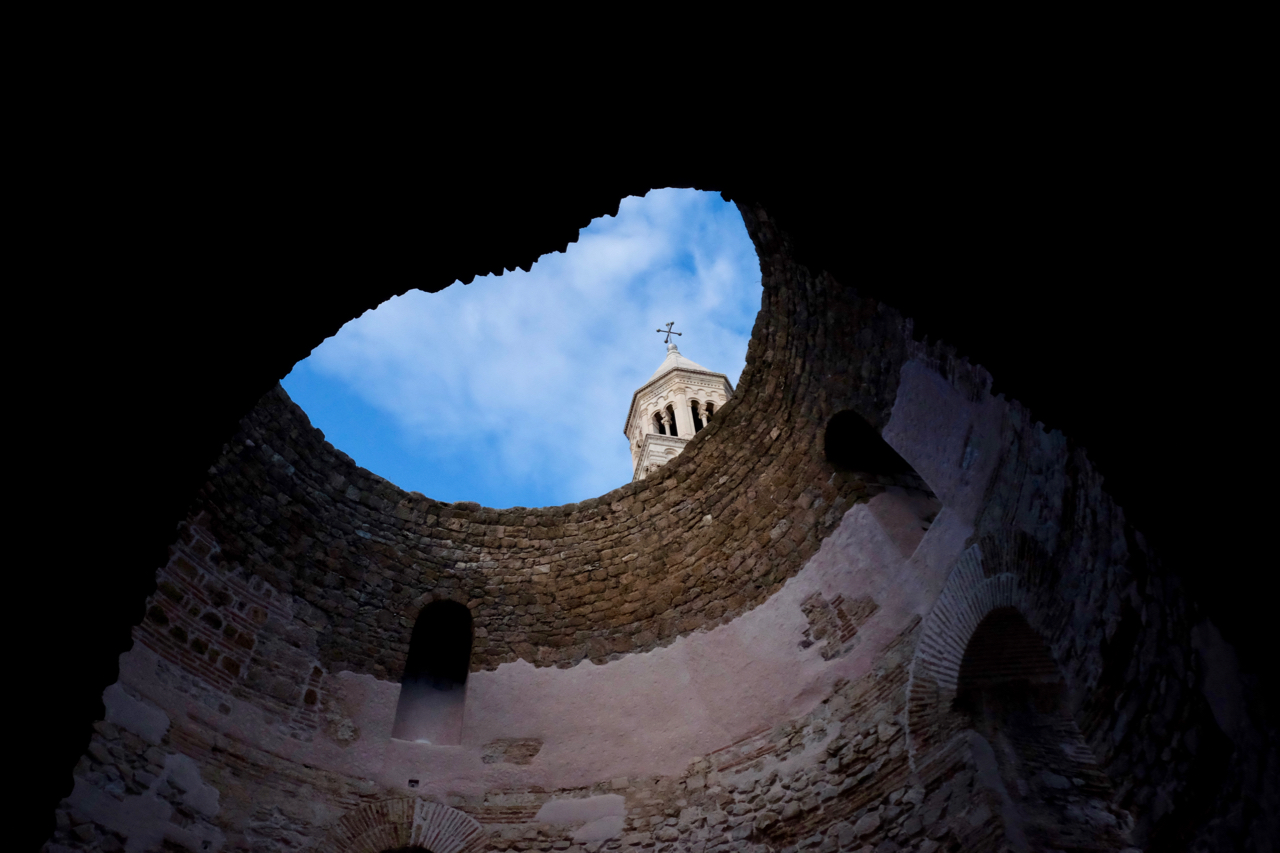
The Cathedral of Saint Domnius bell tower peering through the Vestibule. Photo by Andrew Thompson.
More than once I found myself retracing my steps, or ending up in the same familiar dead-end alleyway, or somehow ending up back outside my apartment door without intending to, and yet none of that mattered. Walking the narrow streets of Split feels like walking a live movie set, and soaking up the details over three days was all I wanted to do.
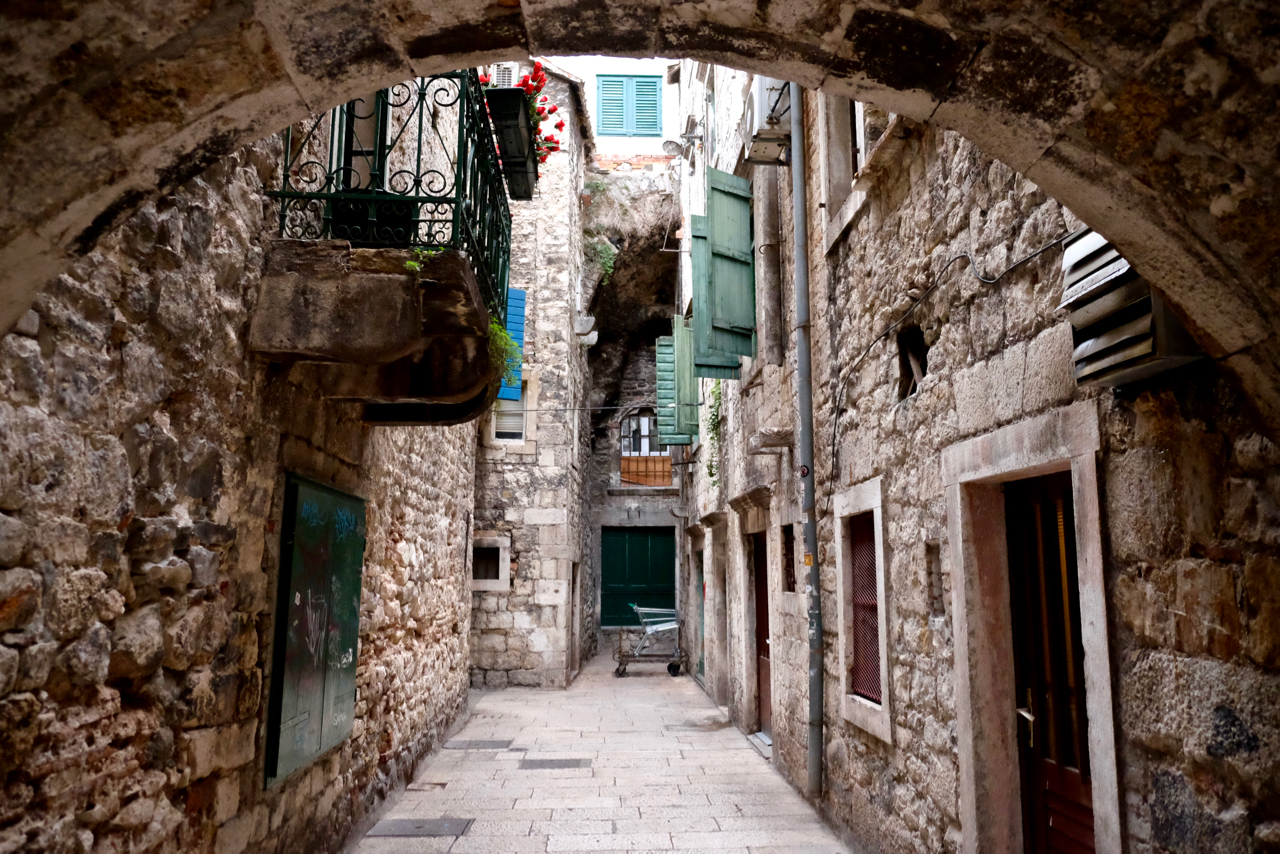
The labyrinthine streets of Split. Photo by Andrew Thompson.
On my final evening, the bells from the Cathedral of Saint Domnius chimed from the tower above my apartment, as they had done regularly throughout my stay. I paid the small entrance fee and walked to the top to reflect on the remarkable city from above, satisfied in the knowledge that there are more cynical travellers than I.
Dubrovnik
Most travellers move from Split to Dubrovnik by bus, but I’d stumbled across more tickets from the budget charter airline that’d flown me a few days earlier. They were going for a song, the exhilarating flight costing just more than the bus and taking considerably less time.
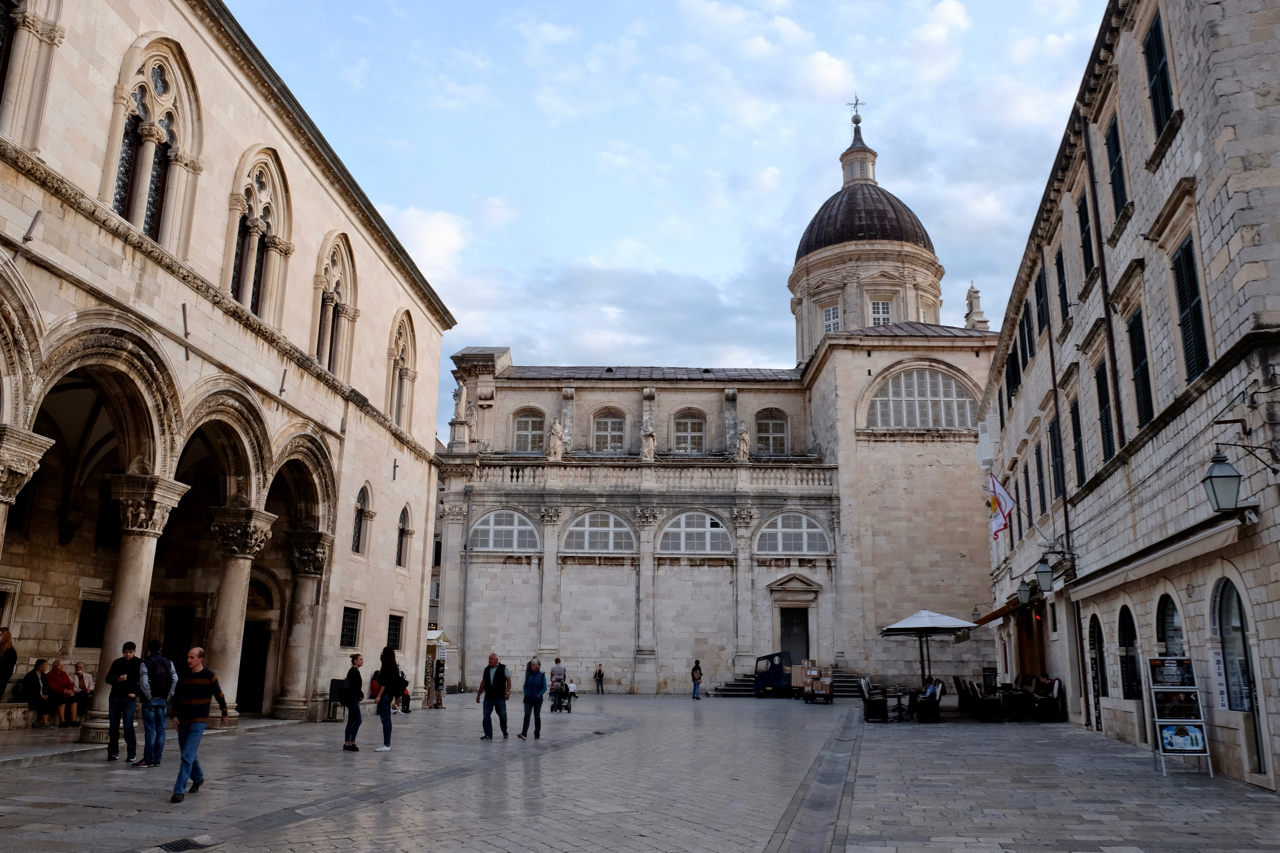
Streets of Dubrovnik. Photo by Andrew Thompson.
When I checked into my accommodation in Dubrovnik the receptionist, making small talk, asked how I’d arrived. “By plane from Split,” I said proudly. She looked confused. “With a company called Trade Air,” I explained.
She looked incredulous and then sniggered. “Trade Air? I’m pretty sure they were grounded last year for being… unsafe.” I thought back to the hairline cracks in the windows, the goofy pilots, and the way the small aircraft bounced around in the air high above the ocean and could only muster a “Uh, really?” in response.
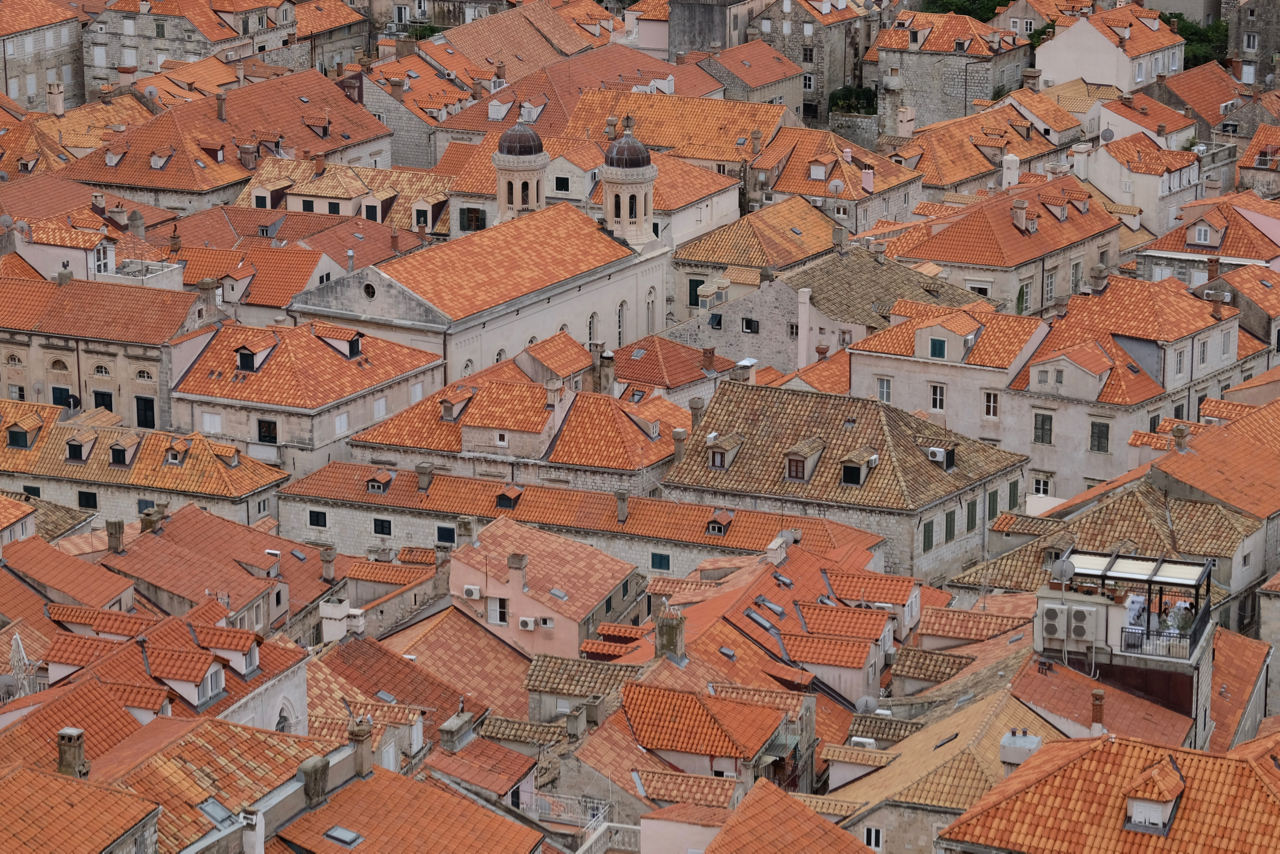
Dubrovnik rooftops are pleasingly uniform. Photo by Andrew Thompson.
I dropped my bags and pulled up a seat on the terrace above the old town to take it all in. The location on the high upper edge of town provided a perfect vantage point over the uniform roofs and nearby ocean. Thanks to its Game of Thrones cameos this iconic walled city may never be the same. Even in late October, the crowds flowed through the main thoroughfare and up and down the steep staircases on either side. And though it’s a smaller, more polished, perfected and pricier version of Split, the quiet backroads and paths still held infinite amounts of charm and appeal.
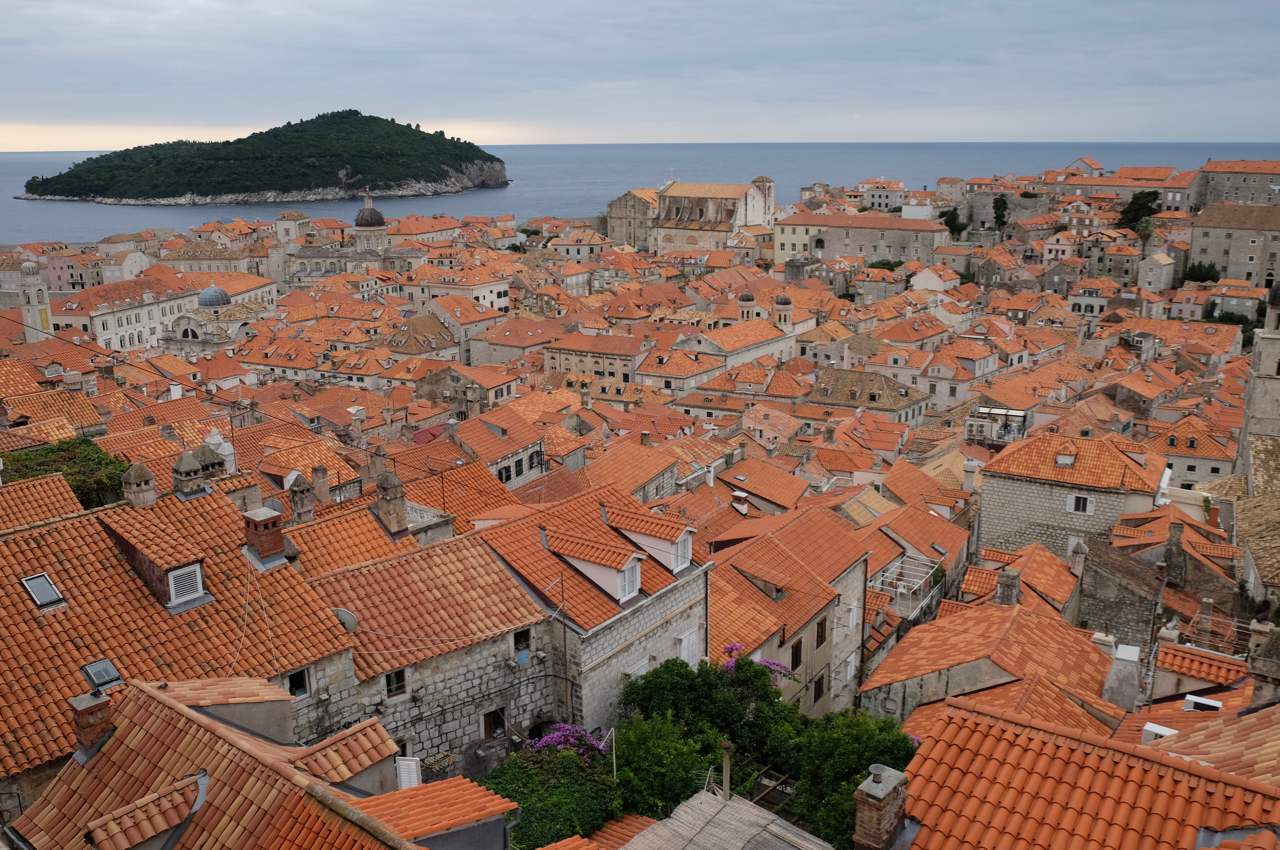
The view from Dubrovnik’s famous town walls. Photo by Andrew Thompson.
I woke up early on my only full day in Dubrovnik, and last in Croatia, in order to beat the crowds who arrive by cruise ship shortly after breakfast. I’d seen them swarming the lower reaches of the town the afternoon before. I coughed up R300 for a ticket to the town’s walls and commenced the two-kilometre circular route almost unhindered.
There’s a beauty and tranquility to the country’s coast that’s hard not to love, and walking the circumference of the defensive Dubrovnik walls was the perfect way to appreciate this whirlwind tour down the incredible Croatian coastline.















